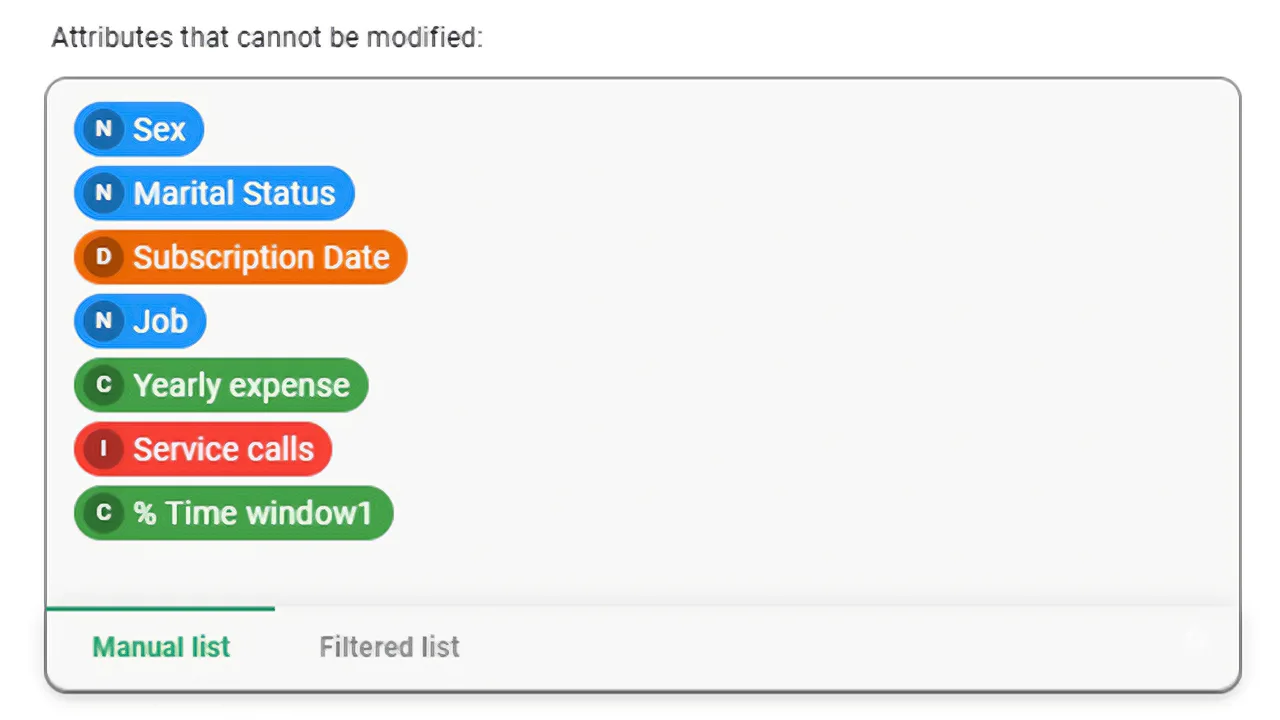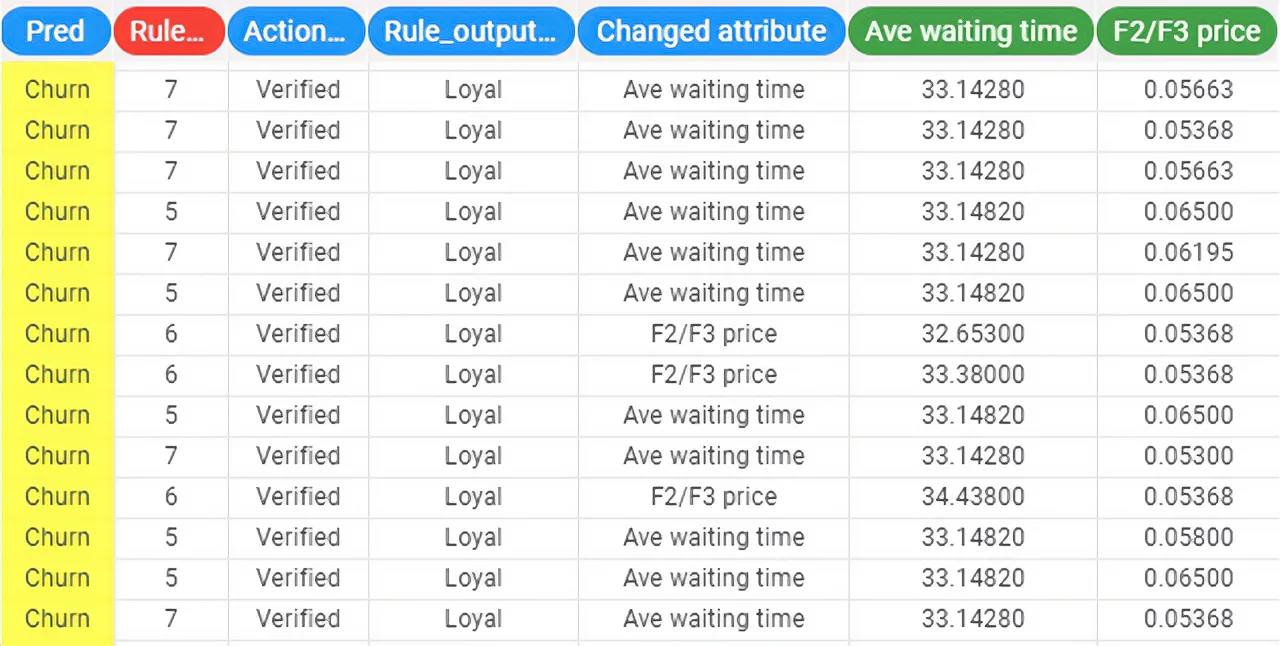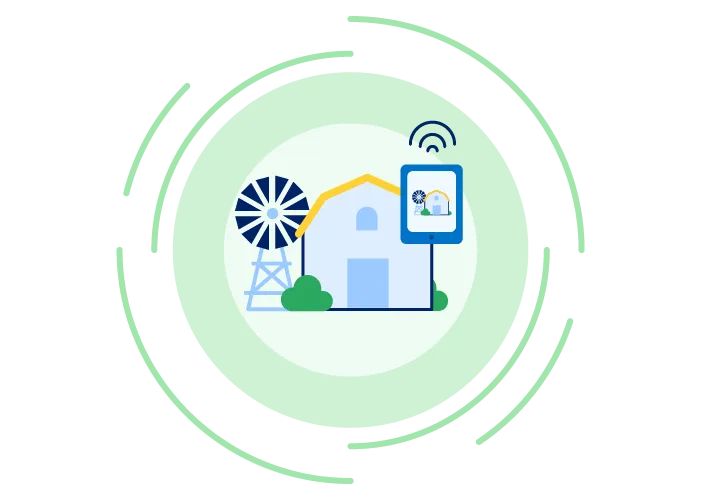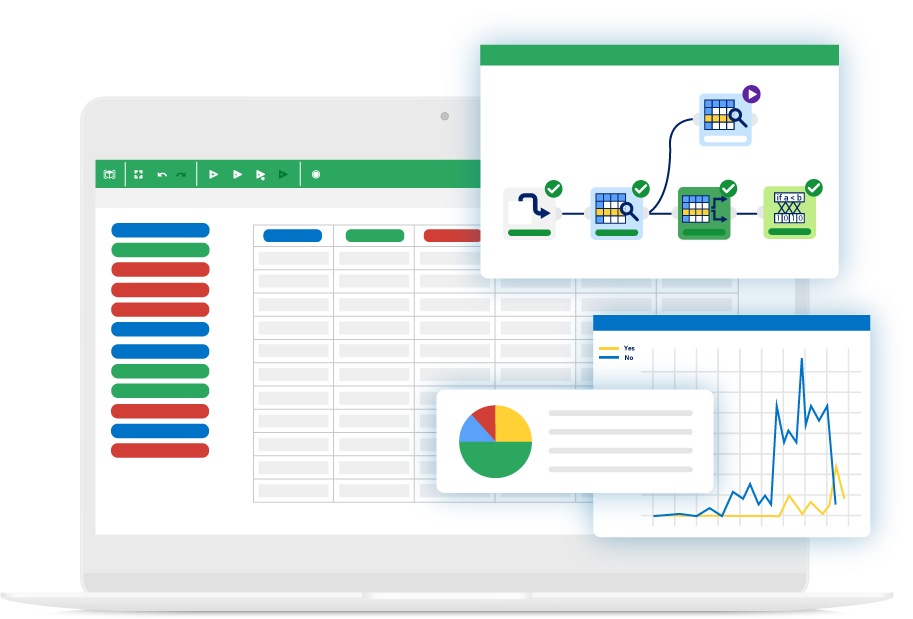Rulex’s Rule-Based Control
THE WHAT-IF SIMULATOR THAT CAN CHANGE FUTURE OUTCOMES
Rulex provides a ground-breaking what-if scenario simulator, which revolutionizes predictive modeling.
Unlike conventional approaches that simply forecast the behavior of complex processes if parameters change, Rulex’s solution goes a step further by recommending the precise modifications necessary to reach desired outcomes, without the need for costly real-life experiments.
Once identified, these recommended changes can be swiftly implemented in business scenarios, reaching goals fast.
RULE-BASED CONTROL
USE CASES
FREE RESOURCES
TRY RULEX PLATFORM
How Rulex’s Rule-Based Control generates action plans

Building a rule-based model with XAI
Rulex Platform leverages the capabilities of its eXplainable AI technology to analyze vast amounts of intricate historical data, identifying those patterns which influence target results, and generating clear if-then predictive rules.
These rules are then passed to the Rule-Based Control task, where users can define precise goals for target attributes by assigning different weights, and select which attributes to include or exclude from the analysis. All in a user-friendly drag-and-drop interface.
Getting recommendations to change outcomes
The Rule-Based Control task provides insights into aligning the outcomes of individual records in the dataset with desired results. It achieves this by recommending specific attribute modifications and outlining the underlying rules guiding these suggestions.
Thanks to Rulex’s transparent eXplainable AI, these rules are presented in plain English, making it easy to understand correlations between actions and outcomes.
These recommendations, whether it’s reducing subscription costs to mitigate customer churn or lowering engine speed to prevent machine breakdown, can then be implemented either manually by a human operator or automatically executed.


Pioneering Industry 4.0
In addition to offering actionable insights for outcome optimization, the Rule-Based Control task also delivers superior performance and lower maintenance costs compared to simulator-based methods, even amidst escalating network complexity.
With its rapid processing speeds, ability to integrate with pre-existing models, and capacity to manage vast amounts of data generated by the Internet of Things (IoT) ecosystem, it stands out as an ideal solution for delivering rule-based feedback to the field. This closed-loop capability is a cornerstone of IoT and plays a vital role in driving the digital transformation toward Industry 4.0.
USE CASES
Hands-on predictive modeling solutions
REDUCING ENERGY CONSUMPTION
The distribution of water in one of Italy’s largest towns imposes substantial energy demands due to the intricate interconnections within its network.
Optimizing this system, including allocating power to pumps for varying water demands, requires specialized expertise.
Rulex analyzed the network’s historical behavior, identifying the key factors that influenced performance, and provided near real-time decision support to the watermain operators.
This approach led to a 5% reduction in energy consumption while maintaining a high standard of service (QoS).
PREDICTING TRENCHER MAINTENANCE
Unexpected equipment breakdowns result in monetary losses for manufacturers.
Rulex designed a predictive maintenance solution for an international manufacturer, specifically aimed at monitoring the condition of their trenchers.
Using historical data generated by sensors on the machines, the solution was able to predict whether equipment was potentially close to breakdown and why, with an accuracy of over 90%.
Rulex’s Rule-Based Control task was able to provide precise instructions on how to pre-emptively avoid breakdowns, such as lowering the speed of specific engines in the plant.
IMPROVING RETENTION STRATEGIES
Customer churn significantly impacts businesses. Acquiring new customers is 6-7 times more expensive than retaining them, highlighting the importance of a solid retention strategy.
Rulex utilized its eXplainable AI technology to help a leading energy supplier pinpoint potential churn causes.
By analyzing data such as subscription plans, energy consumption, and customer support responsiveness, the Rule-Based Control task recommended targeted client retention strategies, such as energy plan changes.
Consequently, the provider maintained customer loyalty and registered an 11% increase in revenue.
Free resources to dive into
Change future outcomes with the Rule-Based Control
Get a 30-day free trial of Rulex Platform.

